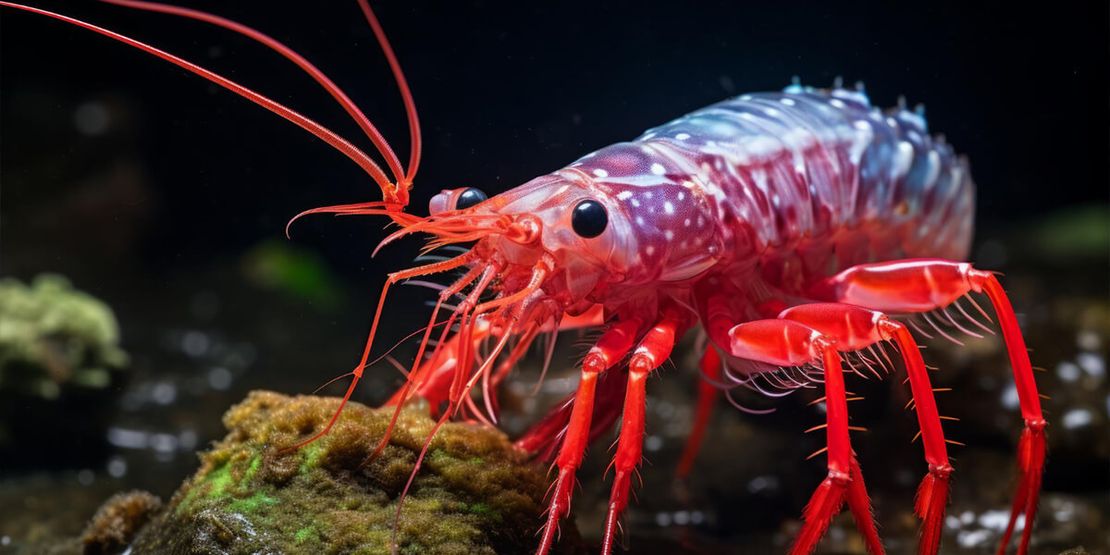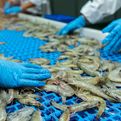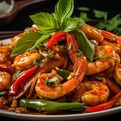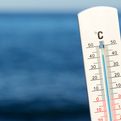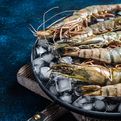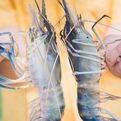Shrimps: Exploring its Culinary Journey from Sea to Table
Shrimp, a beloved delicacy worldwide, belong to the diverse class Crustacea, sharing lineage with lobsters and crabs. With over 2,000 species inhabiting various aquatic environments, from freshwater to tropical seas, these crustaceans offer a bounty of flavors and textures for culinary enthusiasts.
Commercially Important Shrimp Species
Among the myriad species, the Pacific Whiteleg Shrimp, or King Prawn, reigns supreme in commercial aquaculture. Originating from the Indo-Pacific region, this species, prized for its sweet flavor and firm texture, graces dishes like sushi, stir-fries, and salads.
Similarly esteemed is the Black Tiger Shrimp, native to the Western Pacific, recognized for its striking appearance with black and white stripes, and cherished for its succulent taste. Both species are cultivated in countries like Thailand, Vietnam, and Bangladesh, contributing significantly to the global seafood market.
Diverse Shrimp Farming Practices
Shrimp farming, a sophisticated endeavor, combines expertise, technology, and environmental stewardship. The journey begins with the collection and fertilization of wild-caught shrimp eggs, nurtured in hatcheries before being transferred to grow-out ponds. Here, meticulous monitoring of water parameters like temperature, salinity, and pH ensures optimal conditions for shrimp growth.
Controlling feed intake is paramount, preventing overfeeding and consequent water pollution. Disease control presents another challenge, requiring stringent biosecurity measures and vigilant health monitoring to safeguard shrimp populations from bacterial infections, viruses, and parasites.
Meeting the Shrimp Demand
Despite its complexities, shrimp farming remains a lucrative venture, buoyed by the surging demand for sustainably sourced seafood. With seafood gaining traction as a healthy protein source, coupled with a burgeoning global population, the appetite for farmed shrimp continues to grow. This underscores the importance of skilled practitioners equipped with industry knowledge to meet this rising demand sustainably.
Embracing Responsible Shrimp Farming Practices
Shrimp, with their diverse species and culinary versatility, hold a special place on tables worldwide. From Pacific Whiteleg to Black Tiger, these crustaceans offer a spectrum of flavors and textures, enriching cuisines across cultures. Behind the scenes, shrimp farming navigates intricate challenges, yet promises lucrative rewards for those adept in its intricacies.
As the world's appetite for seafood grows, so too does the significance of responsible shrimp farming practices, ensuring a sustainable supply of this beloved delicacy for generations to come.
Riley Sinclair (Digital Aqua Bear)
Hi! I'm Riley Sinclair (Digital Aqua Bear), and I'm exploring the world of digital aquaculture farms. Join me as I delve into innovative methods and sustainable practices for cultivating aquatic life in digital environments. Let's uncover the potential of digital aquaculture farms to revolutionize food production and environmental sustainability.
More From Digital Aqua Farm
Shrimp Farming Technology: Exploring the Pros and Cons
Riley Sinclair (Digital Aqua Bear)
Thai Shrimp Recipe: A Breathtaking Culinary Journey
Riley Sinclair (Digital Aqua Bear)
Maintaining Aquatic Balance: Understanding the Temperature-Dissolved Oxygen Relationship
Riley Sinclair (Digital Aqua Bear)
Optimizing Aquafarming: The Interplay of Water Temperature and Dissolved Oxygen
Riley Sinclair (Digital Aqua Bear)
Black Tiger Shrimp: Exploring Its Aquaculture and Complex Landscape
Riley Sinclair (Digital Aqua Bear)
Maximizing Shrimp Farming with Top IoT Systems: A Complete Review
Riley Sinclair (Digital Aqua Bear)


